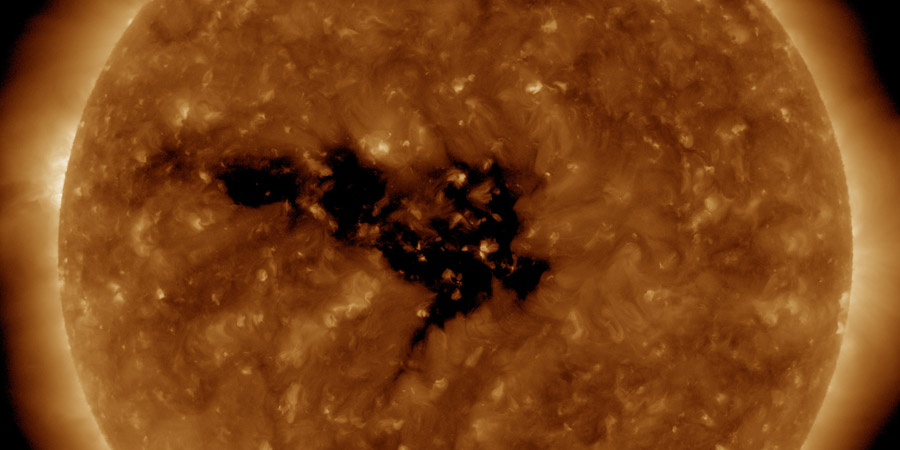Coronal hole faces Earth
Thursday, 3 May 2018 16:04 UTC

We've been in a very quiet space weather period for a while now but we have finally something interesting to report about! A transequatorial coronal hole is facing our planet today and sending a high speed solar wind stream towards us!
A transequatorial coronal hole is facing Earth. Enhanced solar wind could arrive in ~3 days. Follow live on https://t.co/bsXLidnzGh pic.twitter.com/RTRcYqyPgX
— SpaceWeatherLive (@_SpaceWeather_) May 3, 2018
This coronal hole has been around for a while now and the last time it faced Earth, the solar wind stream flowing from this coronal hole caused active geomagnetic conditions which stands for a Kp of 4.
What should we expect this time around? To give us a clue on what to expect, we took a look at the solar wind data from STEREO Ahead. STEREO Ahead is a satellite monitoring the far side and it was inside the solar wind stream from this coronal hole around 27 April. The interplanetary magnetic field strength at STEREO Ahead increased briefly past 20nT and the north-south direction of the IMF (Bz) also peaked near -20nT for a short period. This was during the onset phase of the stream which we call a co-rotating interaction region where bunched up solar wind particles ahead of the solar wind stream arrives. The high speed solar wind stream reached solar wind speeds of over 600km/s a day later on 28 April.
Very decent numbers indeed that would've sparked nice aurora here on Earth. If we translate these numbers to a Kp-value we think minor G1 geomagnetic storm conditions are possible (Kp=5) when the solar wind stream arrives which will likely be this Sunday, 6 May. High latitude sky watchers at northern hemisphere locations might struggle with the short nights but if you are at a location where it still gets dark enough you might enjoy some nice aurora this Sunday. Southern hemisphere sky watchers are enjoying the longer nights right now so if the weather cooperates this will be a nice opportunity for sky watchers in Tasmania and southern New Zealand! Good luck!
Thank you for reading this article! Did you have any trouble with the technical terms used in this article? Our help section is the place to be where you can find in-depth articles, a FAQ and a list with common abbreviations. Still puzzled? Just post on our forum where we will help you the best we can!
Latest news
Latest forum messages
Support SpaceWeatherLive.com!
A lot of people come to SpaceWeatherLive to follow the Sun's activity or if there is aurora to be seen, but with more traffic comes higher server costs. Consider a donation if you enjoy SpaceWeatherLive so we can keep the website online!

Space weather facts
| Last X-flare | 2025/03/28 | X1.1 |
| Last M-flare | 2025/04/01 | M2.4 |
| Last geomagnetic storm | 2025/03/27 | Kp5 (G1) |
| Spotless days | |
|---|---|
| Last spotless day | 2022/06/08 |
| Monthly mean Sunspot Number | |
|---|---|
| February 2025 | 154.6 +17.6 |
| April 2025 | 147 -7.6 |
| Last 30 days | 128.8 -21.8 |


